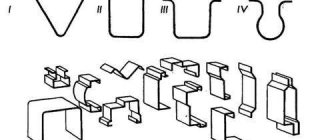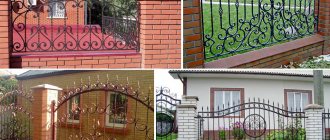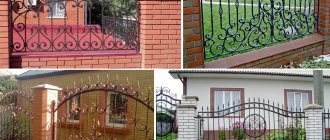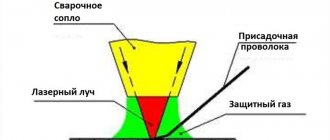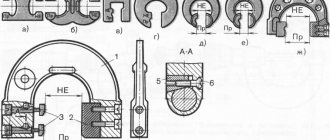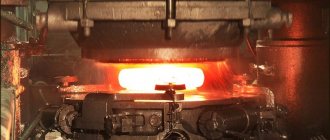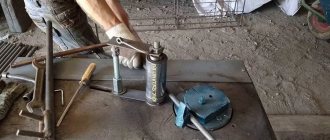Cold stamping (CS) is considered the most advanced metal forming technique. Its qualified application makes it possible to obtain products of various shapes and sizes. What is important is that products made using this technology are distinguished by the accuracy of their geometric parameters and the high quality of the formed surface, and therefore do not require further refinement. The cold stamping process can be easily automated, which makes it possible to manufacture products using it with high productivity.
These parts were produced by cold stamping
We will advise you on any questions!
Cold stamping (CS) is considered the most advanced metal forming technique. Its qualified application makes it possible to obtain products of various shapes and sizes. What is important is that products made using this technology are distinguished by the accuracy of their geometric parameters and the high quality of the formed surface, and therefore do not require further refinement. The cold stamping process can be easily automated, which makes it possible to manufacture products using it with high productivity.
Hot metal stamping
The peculiarity of the method is the deformation of the workpiece after heating it to a certain temperature. Form formation occurs as a result of forced redistribution of heated metal along the recesses of the inner surface of the die.
Features of hot stamping
The process is based on the use of metal plasticity, which increases when heated. Before forming, the blanks are evenly heated in special automatic control units. They ensure maintenance of the required temperature throughout the entire volume of workpieces and eliminate the formation of oxide films.
Equipment used for heat treatment:
- Electrical contact installations. Heating is carried out by electric current passing through the workpiece.
- Induction systems. The heating of the blank occurs due to eddy currents arising in the surface layer of the blank.
- Gas ovens. The temperature of the workpieces increases in an insulated chamber filled with inert gas.
Hot metal stamping is carried out by trained personnel with practical skills and experience in this type of production.
This method produces two types of parts:
- Elongated. These can be: levers, shafts, knobs and others. The work is carried out flat and ends with shaping in blank forging rolls.
- Disk. These include: rings, discs, gears, covers. In this case, the method of upsetting to the end of the workpiece using stamping transitions is used.
Closed method
To obtain products of the required shape, presses with a protrusion at the top and voids at the bottom are used. There is a minimum gap between the fixed and moving parts. The connector cavities are located at an angle of 90° relative to each other. The method is used in cases where the dimensions of the finished product and the forging match the parameters.
Open way
In this case, there is a larger gap between the working parts to allow excess metal to drain. Trimming and punching dies and crank presses are used to remove flash. The technology can be used for stamping products of any size. A flawless surface, a uniform structure and metal savings are the advantages of the open method.
Stamping streams
The creation of complex shapes with differences in thickness and height, protrusions and bends is carried out thanks to surfaces that have special depressions, blanking and stamping grooves.
They come in several types:
- Drawing. They are used to increase the length of individual sections by applying frequent blows while simultaneously turning the part.
- Procurement. Necessary for shaping the workpiece and giving the finished product a shape with minimal metal waste.
- Pinch. They are used to reduce the height while simultaneously increasing the width of a separate section of the workpiece.
- Roll-on. They ensure uniform distribution of metal along the axis of the workpiece with an increase in the diameter of individual parts.
- Bending. They are used to form forgings with a bending angle of 90°.
The final necessary shaping of the part occurs in the stamping strands. They are:
- Rough ones. To bring the dimensions of the workpiece closer to the required dimensions of the part and reduce wear on the finishing groove.
- Finishing. They are installed in the middle of the die, and are used for final molding of products. During its manufacture, allowances for shrinkage are taken into account. The extruded metal flows out through the cladding groove.
Additional operations
At the final stage, after removing excess material in the finishing stream, the shape of the part is corrected. This is required to correct its curved axes. Products made of alloy steels and large sizes are processed in a hot state. Small caliber products are adjusted after heat treatment and cooling.
The physical properties are brought to the required values during the final heating. Heat treatment relieves residual stress, reduces grain size and increases ductility.
Cleaning from scale is carried out by mechanical processing. The procedure for large products takes place in shot blasting complexes. Small parts are cleaned in tumbling drums.
Product calibration is used to reduce roughness and obtain accurate dimensions. After this, there is no need to carry out finishing processing; it is enough to sand the resulting parts. For the work, special dies with particularly precise grooves that repeat the configuration of the forging are used.
Advantages and disadvantages of hot stamping
Advantages:
- Saving metal by reducing losses.
- Possibility of manufacturing parts of complex shapes.
- Reduced labor intensity.
- Obtaining products of precise shape and configuration.
- High level of productivity.
The disadvantages of the method include:
- High cost of design and manufacturing of equipment.
- Complexity and energy intensity of the process.
- The maximum weight does not exceed 4 tons.
The hot method is used to produce large series and in cases where the complexity of the shapes and thickness of the products does not allow cold stamping.
Subtleties of technology
Stamping, or stamping, as this technological operation is often called, is a process in which a metal workpiece undergoes plastic deformation under pressure. As a result of such an impact, for which special equipment is used, a finished product of the required size and shape is formed from the workpiece. Deformation of a metal workpiece can be carried out with its preheating, then this process is called hot stamping. If there is no preliminary thermal effect on the workpiece, then cold stamping of the metal is performed.
Classification of basic stamping operations
Types of material for processing
Stainless steel for stamping can vary significantly in composition and characteristics.
One of the most popular grades of steel is considered to be X12MF, which, due to alloying with chromium and carbon, acquires properties ideal for this processing. The parts stamped from it become elements of simple and complex mechanisms. Products made from X12M are used in metalworking due to their increased strength. Steel grade 5ХВ2С “gives birth” to parts capable of withstanding increased shock loads. A durable and reliable tool is produced from the material 6ХВ2С using the method of die stamping of stainless steel.
We have not listed all brands - there are a lot of them. Knowing the composition of a particular steel, specialists can easily select a material with the desired properties: for example, with increased resistance to corrosion, high density, the ability to withstand thermal effects, etc. There are brands that, due to their high strength, can only undergo hot stamping of stainless steel.
How much does stainless steel stamping cost?
Among many other operations, stainless steel production by stamping is considered a very affordable service. Especially if its most difficult stage - making a stamp - does not take much time and effort. The economic advantages of the technology include:
- low cost of the process,
- high performance,
- efficiency of work,
- a large percentage of automatic actions,
- saving stainless steel for stamping.
They make the operation affordable even for a very modest budget.
We will advise you on any questions!
Have a question?
Our services
When performing cold metal stamping, special technological equipment is used. In this case, the metal from which the workpiece is made is subjected to additional hardening. Meanwhile, when cold stamping of metal is performed, its ductility deteriorates. Increasing the strength of the workpiece during cold stamping leads to an increase in the fragility of the metal, which is a rather negative factor. To avoid this, between the technological operations that comprise cold stamping of parts, the workpiece is heat treated—recrystallization annealing. In finished products that were subjected to such heat treatment during the production process, the parameters of strength and ductility are optimally combined.
Development of the theory of hydraulic explosive stamping
Due to difficulties arising from the lack of development of a general theory, many researchers were forced to take a deeper look at the physics of processes associated with hydraulic explosive stamping. Recently, many works have appeared in which certain aspects of the process are studied. As a rule, quantitative relationships are not provided to assess the impact of various factors. Nevertheless, based on them, it is possible to carry out a comprehensive consideration of the physical features of the hydraulic explosive stamping process in order to create quantitative dependencies based on them.
Let us pay attention to other important issues related to the development of hydraulic explosive stamping processes that need consideration
We note the importance of developing recommendations for:
- assessing the deformability of materials during processes associated with explosive loading,
- creating methods for determining the degree of accuracy of the level of shaping energy sufficient for practice;
- development of experimental methods that facilitate accessible determination of stamping parameters (for example, based on modeling theory).
This study was carried out to solve several main problems related to the consideration of the physical features of the development of the explosion, shaping and loading of the workpiece in the process of hydraulic explosive stamping. To do this, the author considers the most important operation—hydraulic explosive extraction of axisymmetric parts. In accordance with the conducted theoretical and experimental studies, it is possible to recommend methods that help determine the main technological parameters of this process.
Types of cold stamping
In order to change the original geometric parameters of a metal sheet in several directions, cold die stamping is used. In order not to increase the resistance of the metal and, accordingly, not to reduce its fluidity, such a technological operation is performed at a temperature that does not exceed forging.
Using this technology, which requires the use of special equipment, products are manufactured with increased precision, without such defects as hot cracks, scratches, burrs and risks, areas subject to metal shrinkage. However, due to the fact that the stamping press used to perform volumetric stamping is forced to overcome the enormous resistance of unheated metal, it is problematic to obtain parts of complex configurations with its help. In such cases, it is better to use hot rather than cold stamping.
Another type of metal forming, during which the workpieces are not preheated, is cold sheet stamping. When performing processing using this method, the workpiece can be a sheet, tape or strip made of metal. The thickness of the walls of the workpiece when using this technology practically does not change, and spatial products can only be obtained from ductile metals.
History of the process
Mechanization of the process began in the 1850s. Then machines began to be connected to the metal stamping process, which significantly speeded up the production process and improved the quality of products.
And in the 19th century there was a new upsurge in the production of metal parts by stamping, which gave rise to the era of automobile manufacturing. Using this method, car bodies and some mechanical parts began to be created.
Car parts
Since the 1930s stamping of sheet metal parts began to be used in factories for the production of aircraft and ships. And after 20 years it was introduced into the rocket science industry.
The metal stamping method has become popular due to a number of reasons:
- the production process is mechanized and automated using rotary conveyor lines, which makes it possible to speed up production as much as possible;
- it is possible to manufacture parts of any shape and parameters, which can be either a blank or a finished product;
- there is a high precision of manufactured parts, allowing them to be replaced with each other without modification with tools or equipment;
- It is possible to produce lightweight, high-strength products.
Stamping of metal parts is used for massive products that are used as blanks in the construction of cars, ships, aircraft, and for small lightweight parts like clock hands. Stamping owes its popularity to the high speed of production of such products and the almost limitless possibilities for producing non-separable parts of any size, which is so important in the construction of ships and trains.
Stages of stamp manufacturing
A major role in ensuring the required quality of the finished product is played by the design of dies for cold stamping, due to which the part is formed with the required geometric parameters. Working drawings of such working tools installed on stamping presses can be made in both two- and three-dimensional formats. To solve this problem, appropriate knowledge and skills are required.
The development of a drawing and the subsequent production of a stamp used for cold stamping are carried out in several stages:
- drawing up a sketch of the future stamp;
- studying the scheme according to which the material will be cut, checking such a scheme using a special computer program;
- editing the sketch, if necessary;
- final verification of the dimensions of the developed stamp;
- designation of the position and exact dimensions of the holes that will be made on the working surface of the stamp.
When developing dies, you often have to choose between the quality of the future part and the cost of production.
When developing dies for cold stamping, it is necessary to break the drawing of the finished product into separate parts and carefully study them. After this procedure is completed, the production of stamps is carried out. In this case, it is necessary to pay special attention to the requirements for the parameters of the finished product. For each stage of the cold stamping technological process, a route map is developed, which takes into account both the execution time of individual operations and the characteristics of forgings at individual processing stages.
Most dies are made of carbon or alloy steel, but aluminum and copper alloys are sometimes used
In such a matter as cold stamping of a metal workpiece, many parameters are important, which, in particular, include the sequence of technological operations, the distribution of material in the cavity of the working tool, the equipment used and processing modes.
The process of manufacturing dies for cold stamping also imposes serious requirements, since the quality of the formed product depends on the accuracy of this tool.
Stamping of parts, in which sheet metal is used as a workpiece, can include a whole list of mechanical operations. Such operations include, but are not limited to, cutting, punching, extruding, bending, cold heading, forming, crimping and drawing. In this case, cutting, punching and a number of other technological operations are classified as separation operations, and cold heading, molding, bending, etc. are classified as shape-changing operations.
Types of Sheet Forming Separation Operations
Types of sheet metal forming operations
Equipment
Sheet metal stamping is done using a press and a stamp. The press is used to create pressure, that is, the stamping process itself, and the stamp gives the product the desired shape. The stamp is made of tool steel and consists of a punch and a matrix.
The deformation process occurs with the help of a punch and a matrix at the moment of their approach. The movable part is the upper half of the stamp, fixed on the press, namely on its slider.
The lower half remains motionless and is located on the working surface of the equipment. If it is not steel that is being stamped, but the material is soft, then the working parts of the stamp can be made of polymer alloys or wood.
When producing a single, particularly large-sized product by stamping, it is usually not a press that is used, but a special device made of a cast iron or concrete matrix and a container with liquid (usually water). A sheet of metal is placed on the matrix, and above it is a liquid punch.
Concrete matrix fixture
To create the pressure in the liquid necessary to deform the metal into the desired shape, a gunpowder-based charge is detonated in the container or an electric discharge of sufficient power is provided to the water.
For cutting sheet metal, scissors, rather than a press, are used. They come in several types:
- with parallel knives;
- disk;
- guillotine;
- vibration.
Vibrating type scissors are most often used.
For high-quality manufacturing of products, you need to carefully select a press for each type of operation and material being processed. There are several types of presses:
- Hammer (maximum speed up to 20 m/s).
- Hydraulic press (maximum speed up to 0.3 m/s);
- Crank machine (maximum speed up to 0.5 m/s);
- Rotary type machine (maximum speed 8 m/s);
- Pulse stamping machine (maximum speed up to 300 m/s).
Crank machines are suitable for most types of operations. They can have from one to four crank mechanisms. The operating principle of the crank mechanism can be described according to the following diagram:
- The drive electric motor transmits motion to the crank shaft through a kinematic chain, which consists of a friction clutch and a V-belt drive.
- An adjustable length connecting rod drives the crank slider.
- The foot pedal through the clutch starts the working stroke of the press.
Equipment for stamping products with complex configurations may have several sliders.
Let's consider how some separation operations are carried out.
cutting
When cutting, a certain part is separated from a part by cutting it along a curly or straight line. This separation operation is performed using a press made in the form of scissors of different designs.
This operation is intended mainly to prepare the workpiece for other processing methods.
Punching
An operation called punching is used to create holes of different shapes in a workpiece. During punching, part of the metal is completely removed from the workpiece, and its weight decreases.
The figure shows a diagram of the punching process.
Felling
Using the process of cutting out a metal part, a finished product has a closed contour.
The figure shows a diagram for manufacturing a part using cutting.
2. Form-forming deformations include changes in the shape and size of a product when its individual areas are moved, without leading to its general destruction. These include drawing, bending, relief molding, twisting, crimping and other operations.
Let's consider some types of operations that do not lead to physical destruction of the form.
Hood
Using drawing, hollow volumetric products are obtained from flat sheet blanks. For example, in this way parts are made in the shape of a hemisphere, cylinder, cone, cube and other types. The figure shows different hood options.
Bending
Using the bending operation, a sheet product is given a given bending shape. Depending on the type of bending, this operation makes it possible to obtain curved products of different configurations. Some of them are shown in the figure.
Relief molding
This type of operation involves modification of local parts of the product, its external configuration remains unchanged. The figure shows diagrams of some molding operations:
It is also possible to use combined operations, including separation and shaping of one part.
The technological process of cold stamping consists of stages that are associated with the nature of the deformation operation and depend on the type of stamping equipment used.
The development of the technical process is carried out in the following sequence:
- The structure of the main operations is indicated, including their nature, quantity and sequence of execution.
- The initial, intermediate and finished dimensions of the part are calculated, as well as the necessary deformation forces to achieve the desired result.
- Documentation of the technological process is carried out.
Additional operations can be introduced into the technical process, with the help of which the workpiece is brought to a form convenient for processing. These include cleaning, straightening sheets, applying lubricants and other operations.
After stamping, the product can be subjected to a number of auxiliary operations, which include annealing and etching. With the help of such operations, the required mechanical characteristics are given to the finished product. To increase the wear resistance of products obtained by cold stamping, various protective coatings are applied to their surface.
If a sheet metal workpiece needs to be subjected to volumetric stamping, then such an operation can be performed according to two technological schemes.
The first of them consists of three operations:
- preliminary heat treatment of the workpiece (this is necessary in order to reduce the strength of the metal);
- preparing the workpiece surface for stamping;
- directly from the stamping itself.
When performing cold stamping according to the second technological scheme, one more stage is added to the three above stages - preliminary preparation of dimensional blanks, from which finished products will be formed.
Operating principle and design of various types of presses
Mechanical press equipment can use the energy of compressed air in its operation. For this purpose, stamping shops use compressed air supply lines. The working pressure in them is 8 – 12 atm. Machines of this type are equipped with air purification systems to remove water and traces of oil.
Mechanical press equipment
Compressed air takes part in the spin of the flywheel, which raises the connecting rod to the top position. By pressing the pedal or press control buttons, the operator opens the clutch, air leaves the system and the connecting rod rushes down under its weight.
Cold heading, its essence, products
Cold die forging, the essence of the process.
2. Cold extrusion. The essence of direct, reverse, lateral and combined extrusion methods. Products and their application.
4. Sequence of manufacturing products using cold heading machines. Features of cold volumetric molding.
5. Advantages and disadvantages of cold stamping.
1. Volumetric cold stamping is a process in which the ductility of the metal decreases and its strength simultaneously increases. Due to the strengthening that occurs at certain stages of processing, deformation of the workpiece during subsequent operations is difficult. The harmful effects of hardening can be eliminated by using in-process heat treatment or recrystallization annealing.
Volumetric cold stamping makes it possible to obtain high-precision parts. The surface of such parts is of good quality, and there is almost no need for cutting during the manufacturing process of the part. Cold stamping eliminates heating of the product during its production; due to the absence of heating, favorable preconditions are formed for automation of the technological process. The latter, in turn, affects the improvement of working conditions, which naturally leads to increased productivity.
For the mass production of small forgings, usually without subsequent mechanical processing, cold metal stamping is used on forging machines - cold heading, trimming, bending, etc.
This type of stamping includes volumetric stamping without heating: upsetting, extrusion, upsetting, calibration, embossing.
Cold die stamping produces small parts from steel, non-ferrous metals and their alloys. At the same time, compared with cutting processing, technological waste of metal and processing time are reduced several times.
2. Cold extrusion is an operation for the formation of solid or hollow products due to the plastic flow of metal from a closed volume through holes of the appropriate shape. A feature of the process is the formation of a triaxial uneven compression pattern in the deformation zone, which increases the technological plasticity of the material.
Cold extrusion is one of the most common cold forming operations. Its essence lies in the fact that a massive workpiece under pressure from the punch moves into the annular gap between the matrix and the punch and forms a hollow part with a bottom or a tube with a flange.
Depending on the direction of metal flow, there are:
— direct extrusion – used to produce continuous elongated forgings;
— reverse extrusion – used to produce hollow forgings;
— lateral extrusion – used to produce forgings with branches;
- combined extrusion.
There are four methods of extrusion: direct, reverse, combined and lateral.
Direct method
(Fig. 49, a) is characterized by the fact that the workpiece moves in the direction of movement of the punch. This method is used for the production of hollow parts with a flange and sometimes for rods with large thickenings, which are impractical to produce by upsetting (tubes with a flange, a glass with a flange).
Reverse method
(Fig. 49, b), most often found in production, is characterized by the fact that the metal flows in the direction opposite to the movement of the punch. This method produces hollow parts with a thickened bottom that have a round, rectangular or oval shape in plan, for example, capacitor housings, toothpaste tubes, etc.
Combined method
(Fig. 49, c) is a combination of direct and reverse methods, i.e. metal flows in several directions. Combinations of different schemes are possible.
During lateral extrusion
metal flows into the side holes of the die at an angle to the direction of movement of the punch. Thus, it is possible to obtain parts such as tees, crosses, etc. To ensure the removal of blanks from the stamp, the matrix is made of two halves with a parting plane passing through the axial lines of the original blank and the resulting process.
Fig.49 Cold extrusion methods:
a – straight; b – reverse; c – combined; 1 – punch; 2 – workpiece; 3 – matrix
Fig.50 Examples of parts made by cold extrusion:
a – straight; b – reverse; c – combined
3. Cold heading of products (Fig. 51) is a technological process, as a result of which the cross-section in given areas of the workpiece increases due to plastic deformation in the dies without preheating the metal.
Cold heading ensures a favorable arrangement of the macrostructure fibers, resulting in increased part strength and abrasion resistance. The increase in the diameter of the workpiece during upsetting is limited by its longitudinal stability or the likelihood of destruction with the formation of longitudinal cracks. Loss of stability (axis curvature) does not occur if the length of the planted part is less than 2.5 times the diameter of the workpiece. If it is necessary to plant a longer section of the workpiece, planting is carried out in several transitions, successively increasing the diameter with a corresponding decrease in the length of the planted part. To reduce the risk of workpiece destruction, multi-transition upsetting with intermediate recrystallization annealing is used.
